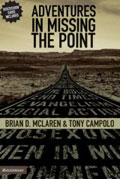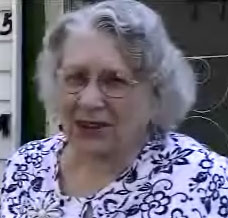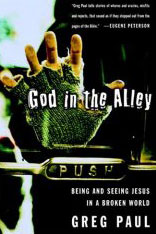My church has taken the Natural Church Development survey several times, and it’s a useful tool for identifying church weaknesses and strengths. But I’ve had some nagging doubts. The folks who developed the survey claim they studied healthy churches in all kinds of settings around the world, and that the survey is universally applicable. But when I take it, the questions always seem geared to a white suburban or smalltown American church. Would they really apply to a persecuted house church in China?
In particular, I didn’t remember any questions about how the church cares for the poor, the dispossessed, widows, homeless, prisoners, etc. The Bible is pretty clear that these are things a church must do. So how can a church be “healthy” when these areas are totally ignored?
Today I looked over an NCD questionnaire, just to see if my suspicions had any basis. There are 91 questions, and number 82 does ask you to give a response to the statement, “Our church does something about hunger in the world.”
But beyond that reference to world hunger, the survey makes no attempt to measure whether the church is doing anything for poor people, for people with AIDS, for single-parent families, for the homeless, for people in prison, for social justice, for immigrants, etc. There is not even anything about race, like whether or not your congregation contains people of other races and ethnicities. These issues may not matter (sadly) in American suburban churches, but they certainly matter in most of the non-Western world. Yet, if your church does help poor people, fight injustice, and seek racial integration, the NCD survey won’t give you any credit for it.
While not dealing with those issues, the survey does ask, “Despite my church activities, I still have sufficient time for my hobbies.” It’s nice that the survey is concerned about my hobbies. I might propose a statement like, “My hobbies get shorted, because I’d rather give my time to church work” That seems like a better indicator of health.
If this survey were truly international in scope, there would be questions like:
- Our church remains strong in the face of persecution.
- We lovingly reach out to victims of AIDS.
- People of various races feel at home in our church.
- We are an advocate for social justice.
- We help people around us who live in poverty.
But no, the NCD survey evidently doesn’t require that a church worry about the homeless, the dispossessed, the prisoner, the stranger, people of other races. You can receive a healthy score without doing any of those things, and you can feel good about yourself. If we measure what we consider important, then the NCD survey considers our hobbies more important than poor people. Yeah, Jesus would agree with that.


 Paula, my niece, highly recommended the book Adventures in Missing the Point, by Tony Campolo and Brian McLaren. Each chapter deals with a different topic–Doubt, Sin, Women in Ministry, Homosexuality, the Environment, Evangelism, etc. The two authors each wrote half of the chapters and briefly commented on the other person’s chapters.
Paula, my niece, highly recommended the book Adventures in Missing the Point, by Tony Campolo and Brian McLaren. Each chapter deals with a different topic–Doubt, Sin, Women in Ministry, Homosexuality, the Environment, Evangelism, etc. The two authors each wrote half of the chapters and briefly commented on the other person’s chapters.  Mary Lambert of Watertown, New York, is being discussed all over the web. That’s her on the right. She’s 81, and has taught Sunday school for 54 years at her American Baptist church. But Mary was recently dismissed as a teacher because her church decided to take a literal interpretation of Paul’s statement in 1 Timothy, “I do not permit a woman to teach or to have authority over a man; she must be silent.”
Mary Lambert of Watertown, New York, is being discussed all over the web. That’s her on the right. She’s 81, and has taught Sunday school for 54 years at her American Baptist church. But Mary was recently dismissed as a teacher because her church decided to take a literal interpretation of Paul’s statement in 1 Timothy, “I do not permit a woman to teach or to have authority over a man; she must be silent.”
 About a month ago I finished “God in the Alley,” by Greg Paul, who leads a small church in Toronto among prostitutes, the homeless, drug addicts, and general down-and-outers. Reading books like this demolishes the canned solutions and simpleton answers that we well-fed evangelicals (and the entire Republican Party) routinely fling at deep social problems.
About a month ago I finished “God in the Alley,” by Greg Paul, who leads a small church in Toronto among prostitutes, the homeless, drug addicts, and general down-and-outers. Reading books like this demolishes the canned solutions and simpleton answers that we well-fed evangelicals (and the entire Republican Party) routinely fling at deep social problems. 


